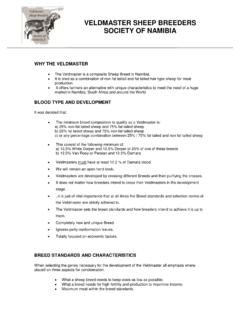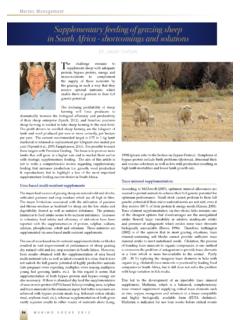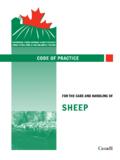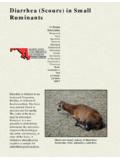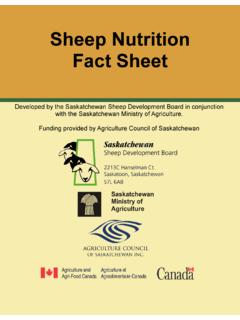Transcription of SHEEP SOCIETY Celebrating 35 years
1 Belclare S H E E P S O C I E T Y. Celebrating 35 years 1982-2017. Belclare SHEEP SOCIETY Website: RAFOXANIDE 5% w/v FENBENDAZOLE 5% w/v ORAL FLUKE AND WORM DRENCH FOR SHEEP . Effective Control of Immature & Mature Fluke Controls Tapeworms, Lungworms (Hoose), Stomach Worms in cattle & SHEEP including Nematodirus in SHEEP Controls immature and Mature Liver Fluke No known Resistance Low Volume: Only 9ml per 60kg Available from Animal Health Outlets Nationwide Tel: 049 5553203. Contents Breeders Adverts Eunan & Mark Bannon (Slanemore Hill Flock) 5. Michael Gottstein (Coolkellure Flock) 11. Sonny Jennings (Cahergal Pedigree Belclares) 13. Barry Cunningham (Toherbeg Belclares) 13.
2 Declan & Joe Miley (Knockcroghery Flock) 19. Roy Butler (Moatland Flock) 28. Richard & John Lalor (Rathkenty Pedigrees) 34. Liam & Eoin Dunne (Tubber Pedigree Flock) 41. Mike Neenan (Kilflynn Pedigree Belclare Flock) 47. Commercial Adverts Univet-Curafluke 2. Animax-Allsure Bolus 18. Grennan & Sons Feeds 21. Mullinahone Co-op 25. MSD Heptivac P plus 26. Bimeda-Zincosel 36. Cormac Tagging 51. Articles Chairmans address 4. Teagasc Ewe nutrition 6. Bord Bia - Harissa flavoured lamb burgers 10. Belcare is best in Ballacolla 12. Athlone show 14. All Ireland Mullingar 16. Tullamore National championships 20. Bord Bia Quality Assurance 22. Bord Bia roast lamb with mustard and rosemary 27.
3 Clonmel show 29. Premier sale 30. Cosecure bolus 37. SHEEP Ireland SHEEP genetic improvement 42. Membership application form 45. History of the Belclare SHEEP 46. Breed characteristics 48. Members list 50. Sales dates back cover 3. Chairmans Address As we enter the breeds 35th anniversary It is with great honour and privilege that I welcome you to the 5th edition of our breed yearbook. I am composing my address with the benefit of hindsight and foresight!! We're coming off the back of a fantastic spring and the outlook for weather and farming prospects are bright! Our breed is very fortunate to have very strong and forward thinking SOCIETY . The continued positive feedback from customers on the breed feeds directly back into the lifeblood of the SOCIETY and greatly assists this SOCIETY go from strength to strength.
4 Belclare has long been regarded by many as one of the best maternal breeds the country has to offer, I. would argue, Belclare are THE BEST. I would also like our breed to be regarded as one which offers an excellent terminal choice for the commercial flock. Year on year I am informed from breed customers on the huge satisfaction present on kill out rates and grades. To the commercial flock Belclare SHEEP offer exactly what is required more lambs per ewe, excellent mothering ability, vigorous lambs at birth, easy lambing and superb growth rate with very good feed conversion ratio and all with little or no maintenance required. As we enter the summer showing and sales become the integral part of the year, I.
5 Urge all Belclare breeders and commercial farmers to attend these events. These can be a great opportunity to show case and view what the Belclare breed has to offer. 2017 sees the SOCIETY envisaging holding open days with a view to further informing and showing commercial farmers what the breed has to offer, and possibly showing some farmers what they are missing out on by not using Belclare genetics!!! As chairman I rely on the help and assistance of many many people. With this valued assistance the Belclare breed proudly plays a major role in the national SHEEP flock. I would like to name but a few, our sponsors, mart staff, show organisers and staff, SOCIETY and committee members amongst many others.
6 Finally I hope each and every one of you enjoy this publication and that it is both enjoyable and informative to read. Should you require any further information about the breed please feel free to contact either myself or Michael Neenan (secretary). And remember by using a Belclare ram you can enjoy all the benefits of having a closed flock, ie possessing excellent replacement maternal females altogether while enjoying fantastic kill out percentages. I look forward to meeting you throughout 2017 at some SHEEP event! Declan Miley Chairman 4. Large selection of pedigree male and female lambs from prize winning stock. More then 120 Belclare Pedigree ewe flock.
7 Stock rams used: 13118191 Sourced from Athenry Research Centre 2013. RL152525 Purchased at 2015 Premier Sale. Sired by 2014 National Champion Member of SHEEP Ireland Lamb Plus Programme. Eunan and Mark Bannon Phone: 086 8560183 or 044 9340163. Web: 5. Early lactation nutrition of the ewe crucial to maximising flock performance Dr. Frank Campion, Teagasc, AGRIC, Athenry, Co. Galway. Introduction During lactation the ewes' energy and protein requirements peak approx- imately four weeks post-partum, at which point they will be at their high- est point of the entire production cycle (Table 1). This increase in nutrient demand is brought about by the onset of milk production immediately post-lambing which is essential as lamb growth during early lactation is almost completely dependent on the nutrients obtained from the ewes' milk.
8 During early lactation the lamb is extremely efficient and can convert one ki- logram (kg) of milk dry matter (DM) to one kg of body weight gain. Ewe milk has a DM content of approximately 20%, meaning to support one kg of lamb live weight gain the ewe must produce five kg of milk. Optimising milk pro- duction during this time is therefore crucially important. There are a number of factors that will influence the ewe's ability to produce milk including her age, genetic make-up and litter size but also pre-lambing nutrition, nutrient availability and ewe BCS. Table 1. ME and MP requirements of an 80kg, twin bearing ewe at lambing and the first two months of lactation (Adapted from AFRC, 1993).
9 Month of Lactation Ewe Lambing Ewe Liveweight 1 2. Liveweight Change (kg) ME MP ME MP ME MP. (g/d). (MJ/d) (g/d) (MJ/d) (g/d) (MJ/d) (g/d). 0 137 309 260. 80 -50 303 254. -100 297 246. Importance of Ewe BCS at Lambing Energy and protein provided from consumed feed alone is generally not suf- ficient to entirely meet these early lactation nutrient requirements as in- take, which peaks at approximately seven weeks after lambing, for a twin 6. bearing ewe lags behind milk production, which peaks three weeks after lambing. Therefore body reserve mobilisation is an essential component of the early lactation energy supply of the ewe. Ewes in the correct BCS at lambing ( ) can be allowed to lose at least units of body condition between lambing and weaning.
10 However, ewes that are too thin at lambing will not have this reserve to draw on, and consequently milk production and lamb growth rates will suffer. Additionally over fat ewes will also negatively impact performance. Research has shown that ewes with excessive body re- serves at lambing have a reduced intake potential during lactation leading to both excessive body reserve mobilisation (and potentially associated ill health) or reduced lamb performance. This increase in requirements and mobilisation of body reserves places a high physiological stress on the ewe, which is often combined with a change in diet type and environment as ewes are turned out to grass.

